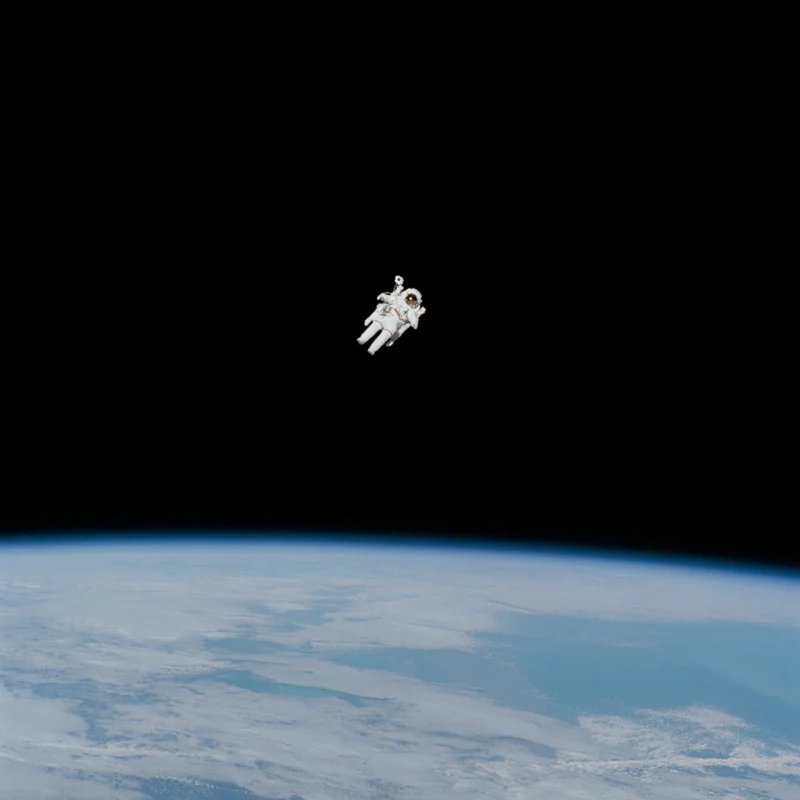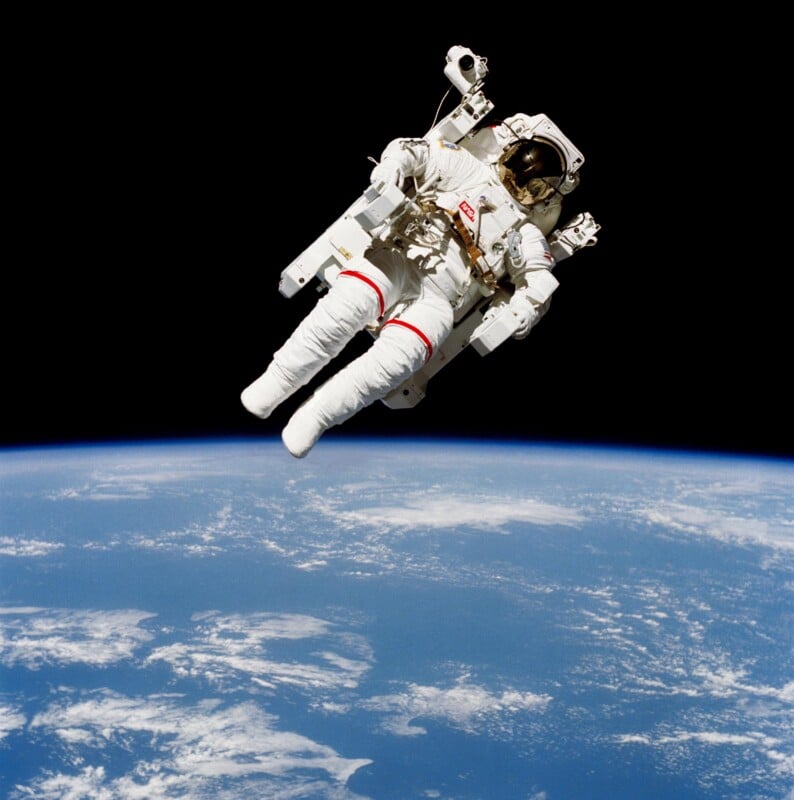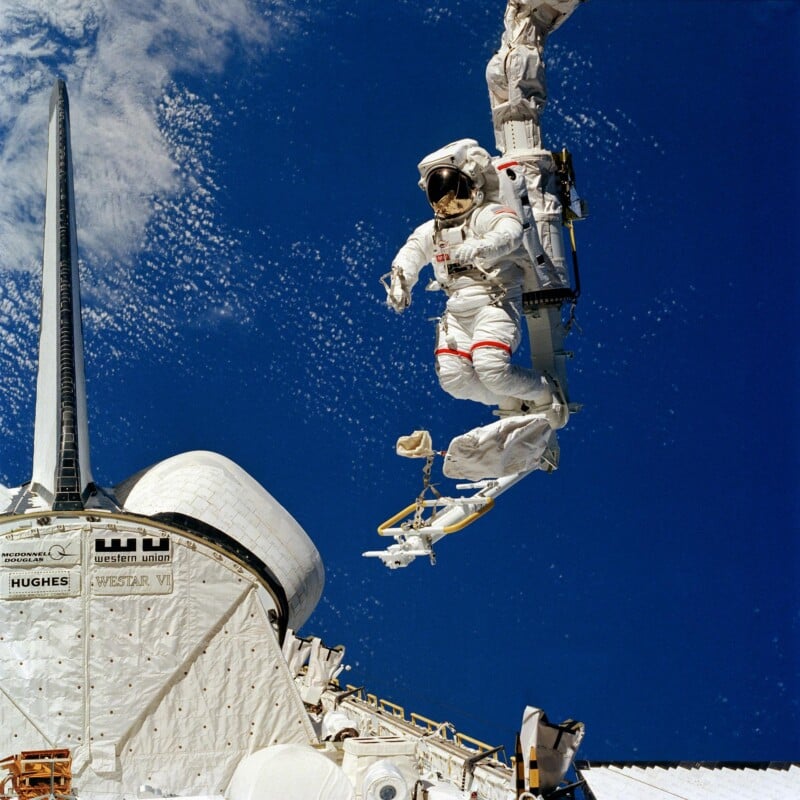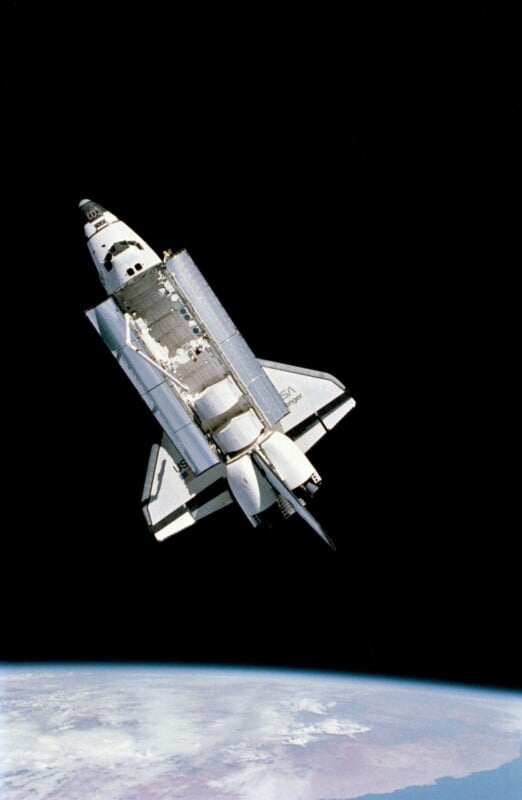Inspiring, Iconic Photos of NASA’s Space Shuttle Era Turn 40 Years Old

On February 7, 1984, astronaut Hoot Gibson aimed his camera out of the crew cabin window of the space shuttle Challenger towards Bruce McCandless II as he floated freely in space. What resulted is one of the most, if not the most, iconic photos and most requested images. It turns 40 years old this week.
McCandless was flying in the Manned Maneuvering Unit (MMU) above Earth, self-propelled and fully untethered from Challenger’s payload bay. At the time, global space agencies were scared of allowing astronauts to float in space with such devices, untethered from the main spaceship, as it seemed extremely risky.
Trying to ease the tension to his wife and flight controllers back on Earth at Mission Control, McCandless compared what he was doing to Neal Armstrong’s first steps on the moon in 1969.
“It may have been one small step for Neil but it’s a heck of a big leap for me.”

The photo above and others captured by fellow astronaut Gibson went on to become some of the most iconic of NASA’s space program and the photo below, captured during the same period, became one of the space agency’s most requested images and was featured on the February 20, 1984 issue of Aviation Week & Space Technology.
The fact that McCandless’s face wasn’t visible perhaps is linked to its widespread success.
“My anonymity means people can imagine themselves doing the same thing,” McCandless says of his photo, adding that, “at visitor centers [sic], they often have life-sized cardboard versions with the visor cut out, so people can peep through.”
He says that because of this, the image of him floating above Earth became a beacon, and “inspired generations of Americans to believe that there is no limit to the human potential.”
The photo below, also captured by Gibson, is less known but still incredible. It shows McCandless on the Manipulator Foot Restraint or “cherry picker” device at end of the Remote Manipulator System (RMS), NASA explains. It allowed astronauts to work outside the ship but still remain anchored.

“What I did was I shifted the camera so that he wasn’t right in the center of the picture. I put him on the edge and the orbiter’s rudder on the other edge of the picture,” Gibson says of the image. “That made a really cool photo.”
A fourth photo, below, was only made possible by the MMU. Capturing the Challenger in its entirety as it floats above Earth, a close inspection will show astronaut Robert Stewart standing just beneath the spacecraft’s RMS.

Even as astronomy and astrophysics push the reach of humanity further, it is difficult to believe there will ever be a “wow!” moment like the Apollo missions. No broken barrier is ever going to be that meaningful and these photos will forever serve as an example of humanity’s potential.